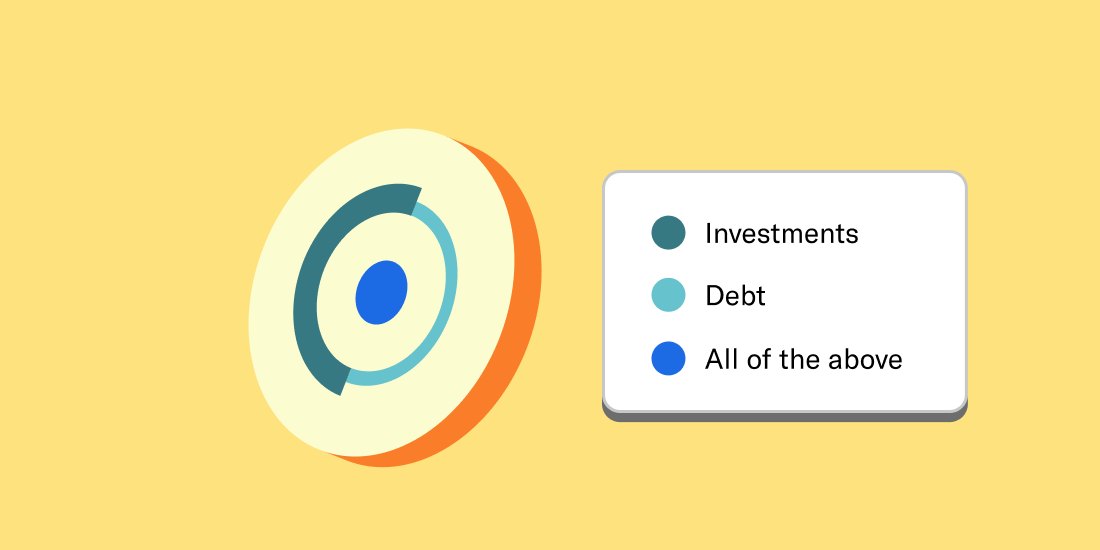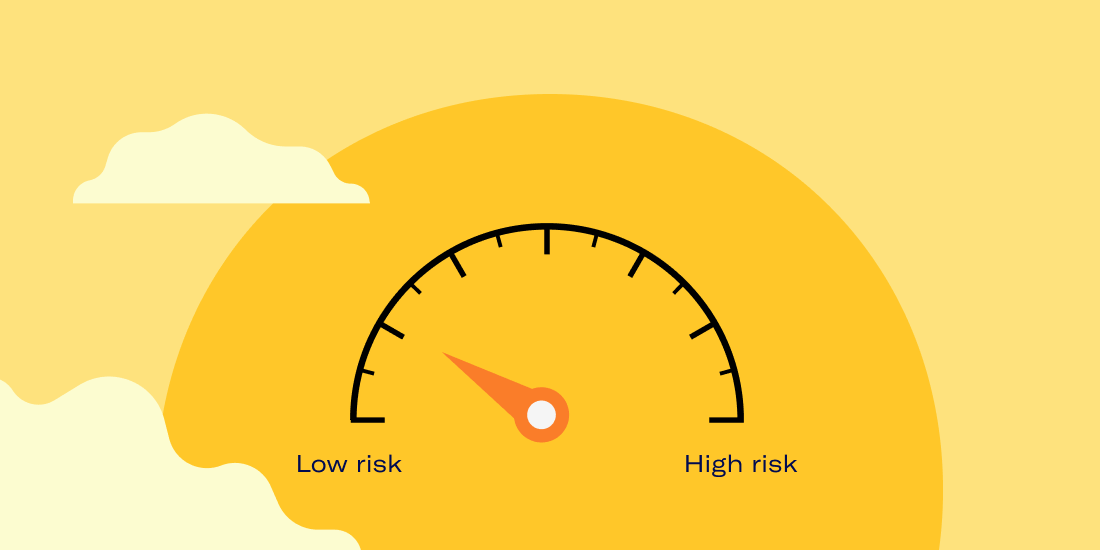Corbin Blackwell, CFP®
Meet our writer
Corbin Blackwell, CFP®
Financial Planner, Betterment
Corbin Blackwell is a CERTIFIED FINANCIAL PLANNER™ who works directly with Betterment customers to help them achieve their financial goals. Corbin has several years of experience in wealth management, and is passionate about helping customers in every phase of life succeed financially.
Articles by Corbin Blackwell, CFP®
-
![]()
How To Manage Debt And Invest At The Same Time
How To Manage Debt And Invest At The Same Time Oct 21, 2022 9:30:00 AM With the right strategy, it's possible to make progress on both goals. Managing debt and investing is a tricky balancing act. You can’t do everything at once, but paying off debt and building wealth are both vital to your financial future. In this guide, we’ll explain how to manage debt and invest in six steps: Account for your spending Make minimum debt payments Contribute to an employer-matched retirement plan (if you can) Focus on high-interest debt Build an Emergency Fund Invest for the long-term First, let’s talk about your debt, your goals, and your repayment strategy. Planning around your debt Debt can completely derail your financial goals. It eats through your savings and can offset the gains you make through investing. Repaying major debt like student loans can feel like climbing a mountain. But not all debt is the same. High-interest credit card debt will quickly outpace your investment earnings. Ignore it, and it will consume your finances. Debt with lower interest rates, like some student loans or your mortgage, can be much less of a priority. If you put off investing in favor of attacking this debt, you may not have time to reach your goals. It is possible to pay debt and invest at the same time—the key is to create a strategy based on your debt and your financial goals. At Betterment, we recommend focusing on the debt with the highest interest first. The more time you give this debt to grow, the harder it becomes to pay off. Now let's walk through Betterment’s six steps to manage your debt and invest. Step 1: Account for your spending Your finances are finite. You have a limited amount of money to pay down debt, invest, and cover your expenses. The first step is to learn what comes in and goes out each month. How much do you have to work with after rent, food, utilities, and other fixed expenses? Are there expensive habits you can eliminate to free up more money? Don’t plan to make changes you can’t stick to. The goal here is to establish a monthly budget, so you have enough to cover your bills and know how much you can save or put towards debt. We also recommend keeping enough in your checking account to act as a small buffer—three to five weeks of living expenses is generally a good rule of thumb—as even the best laid plans (or budgets) are derailed at times. Step 2: Make minimum payments You really don’t want to miss your minimum payments. Fees and penalties make your debt hit harder, and they’re usually avoidable. Think of your minimum debt payments as fixed expenses. After your regular living expenses, minimum debt payments should be a top priority. Step 3: Contribute to an employer-matched retirement plan If your employer offers to match contributions to a 401(k), that’s free money! Don’t leave it on the table. A 401(k) also comes with valuable tax benefits. Even if it under performs, the match program allows your contributions to grow faster. It’s like your employer is giving your financial goals a boost. And that’s why this is almost always one of the smartest investment moves you can make. Step 4: Focus on high-interest debt When it comes down to it, high-interest debt is your biggest enemy. It’s a festering financial wound that grows faster than any interest you’re likely to earn. Left unchecked, credit card debt can easily cost you thousands of dollars in interest or more. And that’s money you could’ve invested, applied to other debt, or saved. Step 5: Build an Emergency Fund Without an emergency fund, you’re one unexpected medical bill, car accident, or surprise expense away from even more debt. Generally we encourage you to pay off your high interest debt before fully funding a three to six month emergency fund. However, some people, particularly those who are worried about income loss, prefer building a large cushion of cash for emergencies first over paying down extra debt Step 6: Invest for the long-term Once you’ve paid down your high-interest debt, you can begin investing for the long-term. With a diversified portfolio, your investments can outpace your lower-interest debt. So you can work toward financial goals while making minimum payments. Using automatic deposits, you can create an investment plan and stick to it over time, treating your investments as part of your fixed budget. Your emergency fund will give you some financial breathing room, and before you know it, you’ll be making progress toward retirement, a downpayment on a house, college for your kids, or whatever your goal is. -
![]()
3 Low-Risk Ways To Earn Interest
3 Low-Risk Ways To Earn Interest Aug 26, 2022 9:00:00 AM Earning interest usually means taking on risk. But with bonds and cash accounts—and investing’s potential for compound interest—you can minimize that risk. In 1 minute When you don’t have much time to reach your goal, you can’t afford to make a risky investment. Thankfully, you can earn interest without putting everything on the line. Here’s how. Bonds Bonds are one of the most common types of financial assets. They represent loans, which a business or the government uses to pay for projects and other costs. Just as you pay interest when you take out a loan, bonds pay investors interest. You’ll typically see lower returns than you might with stocks, but the risk is generally lower, too. Cash accounts Cash accounts are similar to traditional savings accounts, only they are typically designed to earn more interest (and may come with more restrictions). These are great when you need your money to be readily available to you, but still want to earn some interest. And to top it off, many cash accounts are offered at or through banks so your deposits are FDIC insured, so there’s minimal risk. Compound interest In addition to bonds and cash accounts, there’s one more way to earn interest—investing and earning compound interest, which is the interest generated from previous rounds of interest itself. That’s right. As you accrue interest on your underlying investing funds, that interest makes money and that money in turn makes more money. The longer and more frequently your interest compounds, the more you can earn. In 5 minutes Want to earn interest? You usually have to take some risk which means you could lose some money. Financial assets can gain or lose value over time. And investments that have the potential to earn greater interest often come with the risk of greater losses. But there are ways to lower your risk. If you have a short-term financial goal or you’re just cautious, you can still earn interest. It might not be much, but it will be more than you’d get keeping cash under your mattress (don’t do that). In this guide, we’ll look at: Bonds Cash accounts Compound interest Bonds Bonds are basically loans. Companies and governments use loans to fund their operations or special projects. A bond lets investors help fund (and reap the financial benefits of) these loans. They’re known as a “fixed income” asset because your investment earns interest based on a schedule and matures on a specific date. Bonds are generally lower-risk investments than stocks. The main risks associated with bonds are that interest rates can change, and companies can go bankrupt. Still, these are typically fairly stable investments (depending on the type of bond and credit quality of the issuer), making them a good option for short-term goals. With municipal bonds, you can earn tax-free interest. These bonds fund government projects, and in return for the favor, the government doesn’t tax them. Invest in your own state, and you could avoid federal and state taxes. Even when your goal is years away, including bonds in your investment portfolio can be a smart way to lower your risk and diversify your investments. Cash accounts Cash accounts seek to earn more interest than a standard savings or checking account, and they’re federally insured by the FDIC or NCUA. (This is usually the case but depends on the institution housing your deposits (i.e., banks or credit unions). Check to make sure your account is insured before depositing any money.) In most cases, there’s little risk of losing your principal. Your interest is based on the annual percentage yield (APY) promised by the bank or financial institution you open the account with. One of the great perks of a cash account is that it’s highly liquid—so you can use your money when you want. It won’t earn as much interest as an investment, but it won’t be as tied up when you need it. For short-term financial goals, a cash account works just fine. The key is to choose an account that meets your needs. Pay attention to things like minimum deposits, transaction limits, fees, and compound frequency (that’s often how it accrues interest). These differences affect how fast your savings will actually grow and how freely you can use it. Compound interest Compound interest refers to two things: The interest your investments or savings earn The interest your interest earns It’s your money making more money. If you want to build wealth for the long-term, investing and allowing your interest to compound is one of the smartest moves you can make. The sooner you invest and put your money to work, the more opportunity your money has to earn compound interest. Compound interest starts small, but can grow exponentially. Your investment has the potential to grow faster because your interest starts earning interest, too. If you start young, you have a huge advantage: time is on your side! While compound interest accrues with minimal risk, investing in the market involves varying levels of risk. -
![]()
Should You Create a Trust Fund? It Could Help You Preserve Wealth
Should You Create a Trust Fund? It Could Help You Preserve Wealth Dec 4, 2019 12:00:00 AM Weigh the costs and benefits of establishing a trust as part of your estate planning. For those who have assets to leave as a legacy, a trust can be a strategic part of estate planning. Trust assets can include everything from a life insurance settlement and real estate to investments and cash. However, not all trusts are the same—there are many variations, each with specific benefits and restraints. In the past, establishing a trust was largely viewed as a tool for very high net worth individuals looking to preserve wealth across generations. But these days, easily accessible low-cost investing accounts help us all take advantage of the value that creating a trust can provide for our assets. One of the benefits of trusts is that they can shield assets from lawsuits and probate costs. Many are interested in these benefits regardless of their net worth. With the emergence of automated investing services, like Betterment, setting up and managing a trust account of any size is easier than ever. Selecting the right type of trust for your needs will be something to discuss with an estate planning specialist, such as a financial advisor, accountant, or estate planning attorney.1 However, there are some general benefits that most trusts offer. Below is a summary to help you decide whether a trust may be right for you. Privacy and Protection After an individual’s death, an estate typically goes through probate, where the will is open for public scrutiny and assets may be used to pay off creditors. If assets are held in multiple states (real estate, for example), probate will take place in every state—adding substantial costs to settling an estate. The costs associated with probate could reduce the estate by 3% to 7% on average—and that’s not including additional estate taxes and income taxes that may be due. These additional costs mean significantly less assets are given to the intended beneficiaries. With certain types of trusts, all assets that have been placed in the trust are considered property of that trust, and thus they are off limits to creditors, they’re kept out of public record, and they can avoid probate. Trusts are also a useful way to shield and protect assets for people who are at higher risk of litigation, such as doctors. Placing assets in a trust may also reduce the potential for lawsuits between heirs. Taxes Different types of trusts provide different tax advantages. For example, an irrevocable life insurance trust shelters any life insurance death benefit proceeds from estate taxes. The most popular type of trust is a revocable living trust, which is a trust that can be modified once it is established. It’s created during the grantor’s (the person who funds the trust) lifetime. On its own, a revocable living trust doesn’t provide specific tax benefits, but additional provisions can be added to these trusts to help reduce estate taxes. There are about nine commonly used trust types. Speaking with an estate planner and tax advisor will help you determine how to maximize tax advantages and establish the right type of trust for your needs. Distribution Control Not all beneficiaries need the same thing. A trust can establish guidelines for how and when funds are distributed. Rather than simply naming the person who will inherit your assets, you can add provisions that specify how the trust assets can be used. By adding these provisions to your trust, you can help your assets last longer, since you decrease the risk of a beneficiary draining the account for frivolous expenses. For example, funds might be earmarked for education, for special medical needs, or for distribution only after the beneficiary has reached a certain age. In addition, a trust can ensure—through its guidelines—that money is distributed in a specific way to a specific entity, rather than an individual. This might mean a charity, a religious institution, or your alma mater. Sound Investment Strategy A trustee is the person(s) named in a trust document who is responsible for making decisions regarding the trust. By law, a trustee has a fiduciary responsibility to oversee the funds entrusted to them. Regulation, such as the Uniform Prudent Investor Act, states that a trustee must act “prudently” when administering a trust, which means holding the investments in a sound interest-bearing account, as well as assessing the risk, return, and diversification of assets. Trustees can be an investment firm or an individual. Trustees should ensure trust assets are invested wisely to fulfil the specific aims of the trust. Automated investment services like Betterment provide trustees with an easy, low-cost way to manage a trust. Consider the Benefits Whether you are looking for asset protection, privacy, tax minimization, control over how your beneficiaries use their inheritance, or a combination of each of these things—establishing and managing a trust has never been easier. After speaking with your estate planning specialist and determining which type of trust is best for you, check out our FAQ on what we offer for trust accounts here at Betterment. 1Note that Betterment is not a tax advisor and nothing in this blog post should be construed as specific advice—please consult a tax advisor regarding your specific circumstances.



